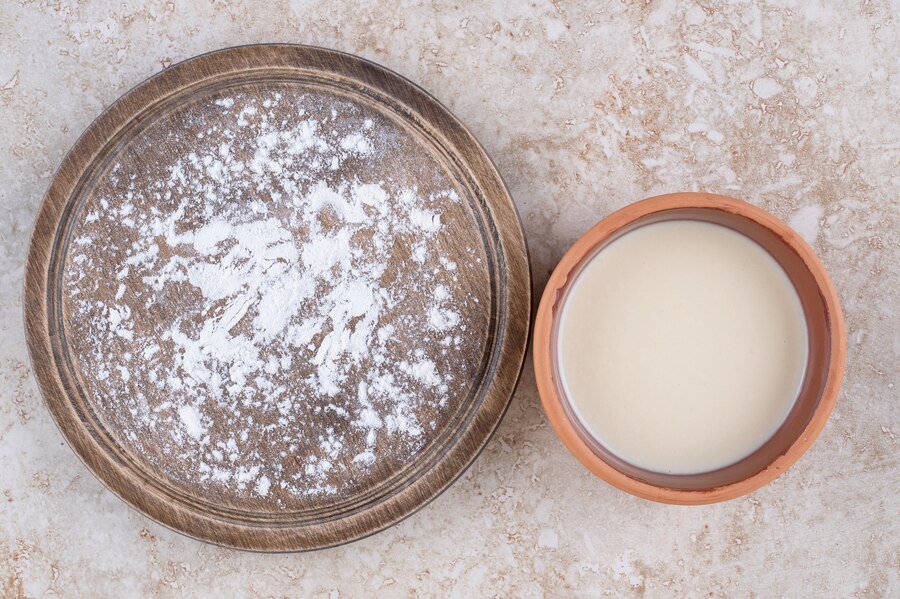Introduction to Baking Soda and Cornstarch
Baking Soda vs Cornstarch—two pantry staples that often find themselves in the limelight of various recipes. They may look simple, but each has its own unique role in cooking and baking. If you’ve ever mixed up these two ingredients or wondered why one is used over the other, you’re not alone! Their versatile nature can be a bit confusing, especially for home cooks just starting their culinary adventures.
Let’s dive into what makes baking soda and cornstarch distinct from each other and how you can use them effectively in your kitchen creations. Whether you’re whipping up cookies or thickening a sauce, understanding these ingredients will elevate your cooking game to new heights. Ready to unravel the mysteries behind these common kitchen heroes? Let’s get started!
Physical Properties and Uses of Baking Soda
Baking soda, or sodium bicarbonate, is a versatile white powder with remarkable chemical properties. It’s slightly alkaline and can react with acids to produce carbon dioxide gas. This reaction is what makes baking soda a leavening agent in baked goods.
In the kitchen, it plays a vital role in recipes like cookies and cakes. The bubbles formed during the reaction help create a light and airy texture. Beyond baking, baking soda also acts as a natural deodorizer. You’ll often find it sprinkled in fridges or used to neutralize odors around the house.
Its mild abrasive nature makes it effective for cleaning too. From scrubbing surfaces to removing stains from clothes, its uses extend far beyond cooking. Whether tackling tough grime or enhancing your favorite recipes, baking soda proves itself time and again as an invaluable ingredient in everyday life.
Physical Properties and Uses of Cornstarch
Cornstarch is a fine, white powder derived from corn kernels. Its texture is silky and smooth, making it a versatile ingredient in both cooking and baking.
In the kitchen, cornstarch acts as a thickening agent. When mixed with liquids, it forms a gel-like consistency that enhances sauces, gravies, and soups. It’s especially handy for achieving that perfect velvety finish in dishes like stir-fries.
Beyond its culinary uses, cornstarch plays an important role in baking. It helps to create lighter cakes by softening the flour’s gluten structure. This results in a tender crumb that melts in your mouth.
Outside of food preparation, cornstarch can be found in various household applications. It’s often used as a natural antacid or as part of homemade laundry starch for crisping shirts and linens without harsh chemicals.
Differences between Baking Soda and Cornstarch
Baking soda and cornstarch may share a spot in your pantry, but they serve very different purposes. Baking soda is a powerful leavening agent. It reacts with acidic ingredients to produce carbon dioxide, helping baked goods rise.
On the other hand, cornstarch acts as a thickening agent. It’s perfect for sauces and soups, providing that silky texture without altering the flavor.
When it comes to appearance, baking soda is a fine white powder that can clump together. Cornstarch has an ultra-fine consistency that feels almost silky to the touch.
Their chemical compositions also set them apart. Baking soda contains sodium bicarbonate, while cornstarch is made from corn grains’ starches.
Using one instead of the other can lead to unexpected results in recipes. Knowing their unique characteristics will help you achieve culinary success every time!
When to Use Baking Soda vs Cornstarch in Cooking
Baking soda and cornstarch play distinct roles in cooking. Baking soda is a leavening agent. It reacts with acids to produce carbon dioxide, helping baked goods rise and become fluffy.
Use baking soda when your recipe includes acidic ingredients like buttermilk or vinegar. It’s perfect for cookies, cakes, and quick breads that need that boost.
On the other hand, cornstarch is primarily used as a thickening agent. It’s ideal for sauces, gravies, and soups where you want a smooth texture without altering flavor significantly.
When making stir-fries or puddings, reach for cornstarch to achieve that glossy finish.
Knowing when to use each can elevate your dishes from ordinary to extraordinary. Their unique properties complement various recipes beautifully—just be sure not to mix them up!
Other Uses for Baking Soda and Cornstarch
Baking soda is a household hero, extending far beyond the kitchen. It’s an exceptional deodorizer, neutralizing odors in your refrigerator or trash can. A simple paste of baking soda and water can tackle tough stains on carpets and upholstery.
Cornstarch also shines outside culinary applications. It’s excellent for polishing furniture when mixed with vinegar, giving surfaces a gleaming finish without harsh chemicals. Additionally, cornstarch serves as a natural thickener for homemade sauces and gravies.
Both ingredients find their way into personal care routines too. Baking soda can be used as a gentle exfoliant for skin or even to freshen breath when added to toothpaste. Cornstarch acts as an effective dry shampoo alternative, absorbing excess oil from hair between washes.
These versatile powders truly transform everyday tasks into simpler solutions while maintaining eco-friendliness at home.
Conclusion: Baking Soda vs Cornstarch
Baking soda and cornstarch each play distinct roles in the kitchen. Understanding their properties can enhance your cooking and baking experience.
When you need to achieve a light texture, baking soda is your go-to leavening agent. It reacts with acids to create bubbles that lift baked goods.
Cornstarch shines when it comes to thickening sauces or soups. Its fine texture allows for a smooth consistency without altering flavor.
Both ingredients serve unique purposes beyond culinary uses. Baking soda works wonders as a natural cleaner, while cornstarch can be used in homemade cosmetics.
Choosing the right ingredient depends on the task at hand. Knowing how they differ helps ensure optimal results every time you cook or bake.
FAQs
- What is the primary difference between baking soda and cornstarch?
- Baking soda is a chemical leavening agent, while cornstarch is primarily used as a thickening agent or for texture in recipes. They serve different purposes in cooking and baking.
- Can I substitute one for the other?
- Generally, you cannot substitute them directly due to their distinct functions. If a recipe calls specifically for one ingredient, using the other may lead to undesirable results.
- Is baking powder similar to baking soda?
- Yes, but they are not identical. Baking powder contains both an acid and a base (usually cream of tartar), plus starch. It can be used as a substitute for baking soda if there’s enough acid in your recipe.
- How does storage affect these ingredients?
- Both should be stored in airtight containers away from moisture. Baking soda has an indefinite shelf life if kept dry; however, cornstarch can clump over time if exposed to humidity.
- Can I use cornstarch as a gluten-free alternative?
- Absolutely! Cornstarch is naturally gluten-free, making it an excellent option for those with gluten sensitivities when thickening sauces or soups.
- Are there health benefits associated with using either ingredient?
- Baking soda can help neutralize stomach acid when consumed properly but should be used cautiously. Cornstarch provides energy through carbohydrates but lacks nutrients compared to whole grains.
These common queries highlight how versatile both ingredients are—and why understanding their unique properties matters in everyday cooking and beyond!










